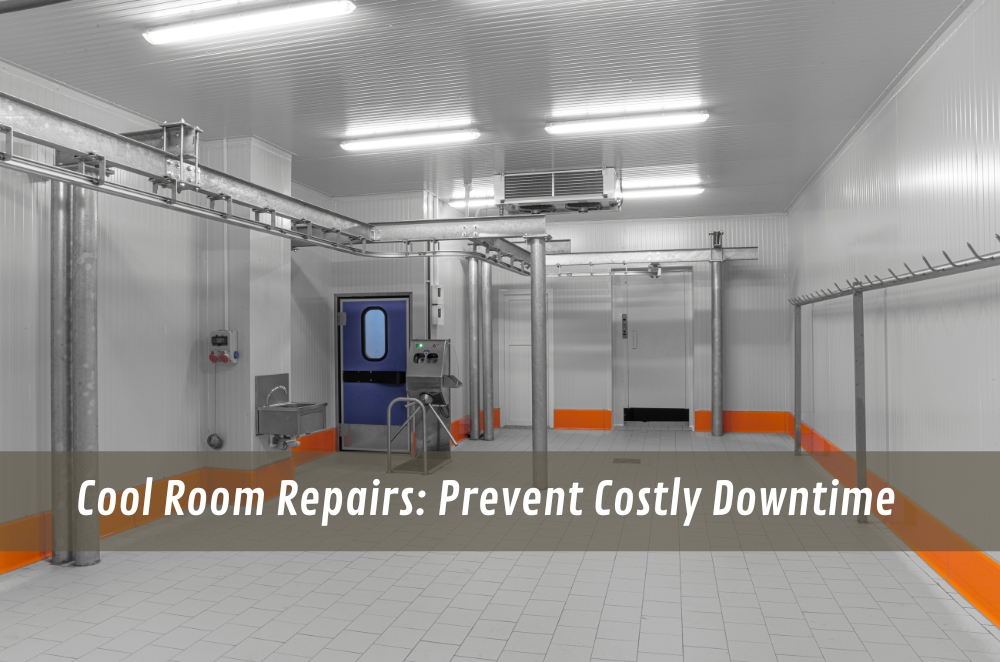For every business dealing with perishable inventory, keeping a cool room is essential; prompt response to unplanned breakdowns can help to prevent significant spoilage and money loss. Fortunately, affordable solutions for commercial cool room repairs exist that simplify maintenance and improve dependability. Incorporating proactive servicing practices and knowing key red flags helps companies to resist temperature changes. Knowledge of component performance and timely intervention ensures consistent operation. Exploring repair viability before pursuing replacement safeguards budgetary health and operational continuity effectively.
Cool room maintenance: Preventative measures
Regularly scheduled inspections and maintenance checks help identify growing problems early and prevent minor defects from ballooning into expensive system breakdowns.
- Clean condenser coils: Thoroughly eliminating built-up dust and debris maximises heat dissipation and improves general cooling system efficiency.
- Monitor temperature readings: Constant tracking of internal conditions with calibrated sensors protects stored goods from spoilage by enabling quick reaction to changes.
- Inspect door seals: Air leaks that compromise temperature stability and increase energy costs are eliminated by carefully inspecting and replacing broken gaskets.
Completing these maintenance tasks regularly helps to lengthen the life of equipment and significantly reduces the likelihood of expensive repair costs and unexpected breakdowns.
Common cool room problems: Identifying the issues
Identifying familiar sources of malfunction quickly equips operators with the insight required to address issues before they inflict extensive damage on stored goods or operational continuity.
- Compressor failure: Worn or overheating components can precipitate total cooling shutdown, demanding immediate attention to prevent severe product loss.
- Refrigerant leakage: Leakage of refrigerant might result from failing seals or broken lines, which can lower cooling capacity and, if not fixed, raise problems with environmental compliance.
- Electrical faults: Faulty wiring, overloaded circuits, or control board failures could lead to inconsistent performance and weakened safety procedures.
Dealing with these ongoing issues as early as possible improves system reliability and lowers the scope and cost of recovery actions.
Cool room repair strategies: Minimising downtime
Engaging experienced technicians immediately upon detecting serious issues is crucial for restoring optimal cooling performance and preventing cascading failures that could disrupt business operations.
- Expert diagnostics: Commercial fridge repair experts accurately evaluate system components to pinpoint malfunctions and determine precise repair interventions.
- Component replacement: Replacing faulty compressors or evaporator coils restores the entire cooling capacity without requiring a total unit overhaul.
- Instrumentation calibration: Thermostat and sensor threshold adjustments achieve careful temperature control and dependable continuous performance in instrumentation calibration.
Working with reliable service providers speeds recovery times and guarantees economical solutions that support continuous operation.
Conclusion
Reliable cool room management starts with thorough maintenance plans, quick detection of minor problems, and recruiting experienced specialists. Regular cleaning, temperature tracking and seal inspections prevent many disruptions before they begin. Timely attention to compressor, refrigerant and electrical faults mitigates escalation into costly breakdowns, while professional diagnostics and precise component renewals restore functionality efficiently. These strategies empower operators to fix commercial cool rooms with minimal operational interruption and uphold stringent storage standards.





Comments